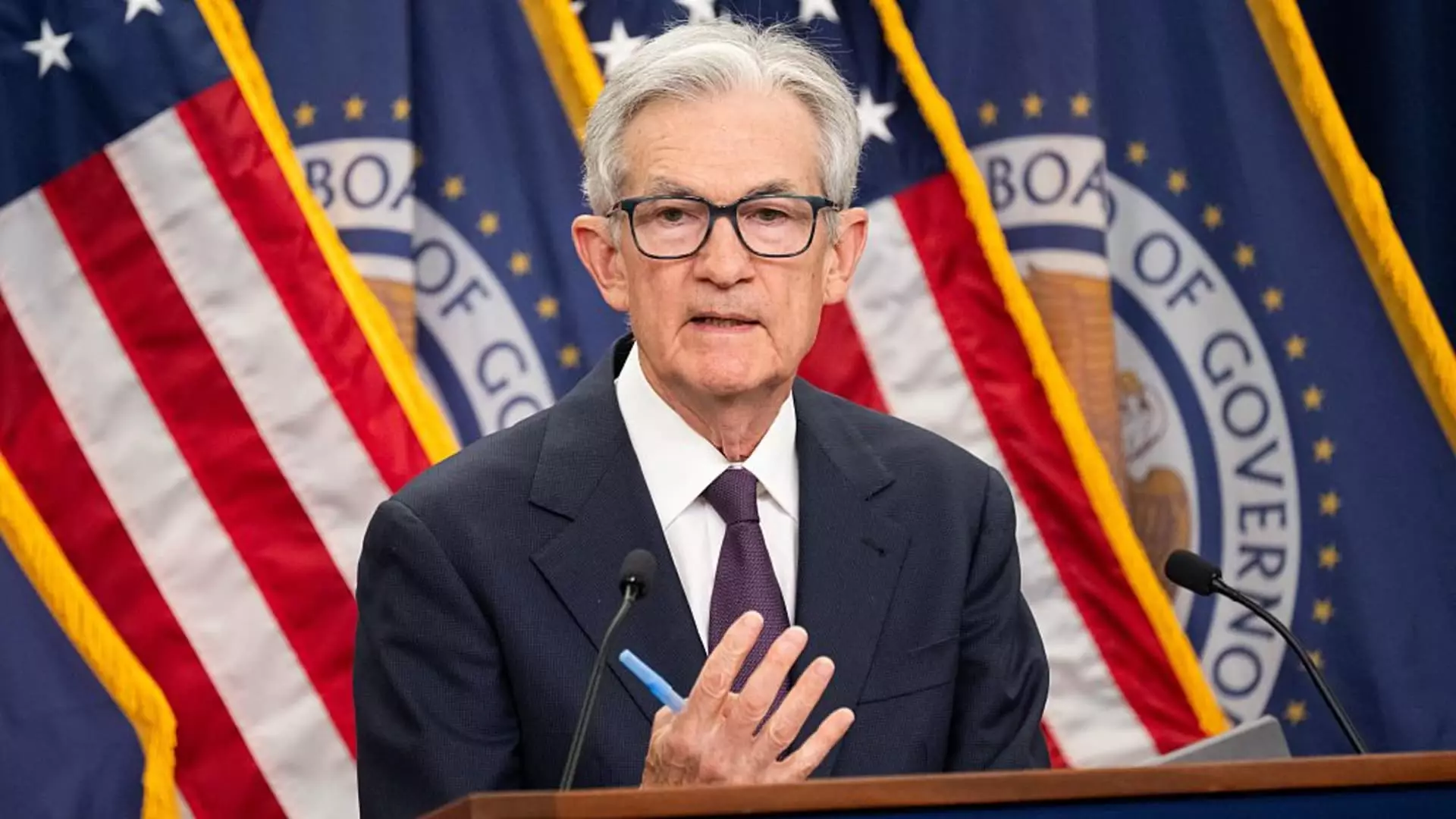In the labyrinth of economic management, few things draw as much ire and scrutiny as inflation. Federal Reserve Chair Jerome Powell’s recent statements regarding inflation reveal a profound balancing act that reflects the complexity of modern monetary policy. The inflation rate, hovering above the Fed’s cherished 2% target, is a ticking clock that signals trepidation for the economic landscape. Powell’s insistence on “waiting to learn more” exhibits a hesitant approach, suggesting that the central bank’s commitment to stability may be viewed as a reluctance to take decisive action. It’s a tightrope walk where one misstep could plunge the economy into chaos, and the air is thick with uncertainty.
The Tariff Tango: A Complicated Relationship
Powell’s commentary on tariffs introduces an element of unpredictability that complicates the Federal Reserve’s decision-making process. Historically, tariffs have had a dual personality: they can lead to one-off price surges or, in rare cases, foster prolonged inflationary pressures. However, the path forward remains shrouded in ambiguity with Trump’s tariffs and their implications still uncertain. Powell’s statement that “the effects of tariffs will depend, among other things, on their ultimate level” raises a more significant question: Is the Fed merely waiting for clearer skies, or is it ensnared in a web of external political pressures?
Trump’s relentless criticism of Powell adds another layer of complexity to this already intricate scenario. By branding Powell as “dumb” and “hardheaded,” the former president evokes a stark portrait of a Fed Chair caught in the crossfire of political firestorm. In a time when economic credibility is paramount, such public disdain is not easily brushed aside. It highlights a deeper struggle between maintaining independence within the central bank and the external pressures from an administration that demands immediate results.
Pressure on Employment and Inflation: A Tug of War
While Powell touts the labor market as being “around full employment,” the specter of inflation looms large over America’s economic prospects. The fundamental dilemma lies in the Federal Reserve’s dual mandate: to foster maximum employment while keeping inflation at bay. Powell’s assertion that “without price stability, we cannot achieve the long periods of strong labor market conditions” is a stark reminder that the economy is a delicate ecosystem, where one imbalance inevitably leads to deterioration in another area.
The Fed’s decision to hold rates steady reflects a cautious acknowledgment of ongoing pressures. However, the differing opinions within the Federal Open Market Committee (FOMC) regarding potential interest rate cuts reveal a lack of consensus that could undermine confidence in the Fed’s ability to navigate these turbulent waters. With pressures mounting from both sides, the Federal Reserve risks losing its grip on maintaining a balanced economic environment.
The “Dot Plot” Dilemma: A Future Uncertain
Another significant element of Powell’s commentary lies in the underlying tension within the FOMC’s “dot plot.” As members express varied views on potential interest rate cuts—ranging from none to as many as three—it’s evident that the internal struggles reflect broader uncertainties in the economic outlook. A split among key officials introduces a note of caution that may be interpreted as a harbor of indecision rather than a planned strategy.
The existence of dissent within the ranks further diminishes the Fed’s credibility. An organization perceived as divided risks appearing ineffectual, particularly in the eyes of the markets. The intertwined nature of expected future cuts and incoming inflation data illustrates the precariousness of the Fed’s position, where sound policymaking relies heavily on media perception and political repercussions.
Through this intricate maze of data analysis, political pressure, and economic forecasting, it becomes evident that the Federal Reserve is navigating a complex web of trial and error. Every decision will have ramifications far beyond the walls of Congress, and the consequences of inaction could reverberate throughout the economy for years to come. There is a sense of urgency in the air, a recognition that the need for bold action has never been greater—a balancing act fraught with challenges, yet essential for the nation’s economic health. The journey forward requires more than just caution; it demands visionary leadership willing to confront the uncomfortable truths that lie ahead.

Leave a Reply